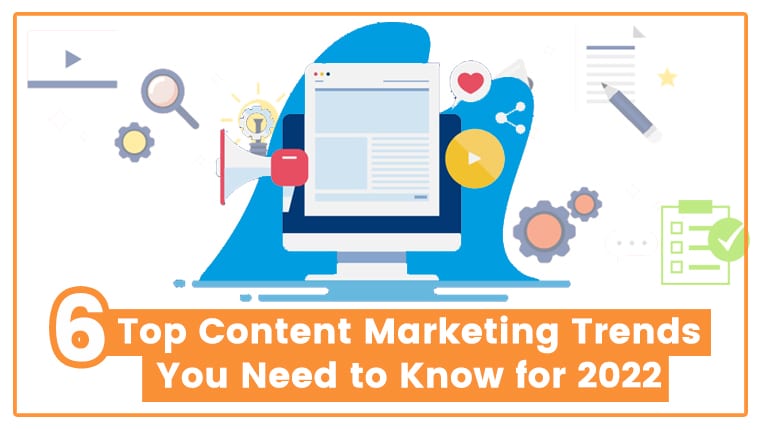Content marketing has exploded in popularity in recent years, with the leading brands of the world all adopting it into their marketing strategy. And it’s not difficult to see why – high-quality content creates loyal followers, improves your search engine rankings, and attracts new customers that are already predisposed to buy from you.
But just because everyone’s doing it doesn’t mean you can rest on your laurels – for 2022 and beyond, here are six content marketing trends you’ll need to stay on top of to keep ahead of the competition…
#1 – Beyond Email Lists
The internet has changed everything. It’s no longer about getting more email subscribers; it’s about building a community of people who love what you have to say. Of course, that doesn’t mean giving up on your email list. (There are great tools, like ConvertKit and Drip, that can help you easily manage multiple lists.)
But now more than ever, content marketing is about creating conversation – not just promoting your brand. So yes, talk about your new product release – but do so in a way that resonates with people who care about you and want to support you. The best way to achieve genuine influence? Share with them first, then sell later.
#2 – Audience Empathy
Audience empathy is a principle that supports brands in crafting content by understanding what their customers want. As a marketing concept, audience empathy has evolved into a practice where marketers are encouraged to find out what people really want, not what they say they want.
The implications of audience empathy as a practice come through in its objective: content must be relevant and interesting.
The challenge of creating compelling, customer-centered content can be daunting. But when done with the intention of drawing people in, and talking about real challenges, that’s when you get your audience intrigued and engaged.
Dove’s campaign Real Beauty Sketches was one of those rare campaigns that was so effective it went viral. Launched in 2011, it highlighted how women perceive themselves differently from how others see them—and how perceptions differ across cultures.
#3 – User Experience Design
Designing user experience is more than just designing the user interface of a product, but making sure the user has a great and consistent experience when using it.
User experience design means anticipating the needs of users at each stage of their interaction with your product and service to ensure you are providing the right tools, functionalities, and content to be maximally useful and easy to use.
While in years past online services had low engagement rates, that trend is shifting as websites embrace intuitive UX designs. In fact, UX is one of the main factors behind conversion rates on sites like Facebook which have seen growth in revenue from less than $6 billion in 2012 to over $117 billion by 2021. It’s even more important today than ever before to stay ahead of current trends and meet customer expectations.
#4 – AI Personalization
Artificial intelligence (AI) is already being used by many marketing professionals. By leveraging AI, companies will be able to create more personalized content and in turn, drive better engagement. This year, I can confidently predict that AI personalization will become a must-have tool for marketers all over the world. More and more companies will begin using it in order to stay ahead of their competition and provide top-notch service to their clients. In fact, according to Markets and Markets, by 2023, social media AI personalization alone is set to become a $2.2 billion industry!
#5 – Mega Influencers
To reach your audience, you’ll want to align with influencers who understand your community-building strategies and connect with your niche audience. The majority of brands will work with mega influencers or mid-level influencers, while some will work with micro-influencers (less than 10,000 followers). While mega influencers can come at a high cost, if you have an appropriate budget and meet them on their level by providing value in return, they’re worth it.
#6 – Being Everywhere
Since social media allows businesses to reach their audience directly, there’s really no excuse to stick with one channel. In fact, staying consistent across all your channels will keep your message clear and consistent. Especially since most of your audience is on at least two or three of these platforms. It’s easy to forget about another communication channel when you’re busy posting about your latest product on Instagram, but it’s important not to underestimate what can be lost if you don’t cross-promote content across social media channels.
It can seem like you’re going to spend all your time on social media. That’s why I wrote the article about repurposing pillar content and how it can amplify your brand’s online presence. It explains how you can spread content on multiple platforms quickly so that you’re right there when the customer is looking for you.
Are all these content marketing trends relevant to your business?
Yes, they are, depending on a number of factors that affect your business goals and growth plans. Need help with fine-tuning your content marketing strategy? Book a complimentary call with me, and let’s discuss tried and tested ways to get your target audience intrigued and excited about your brand.



